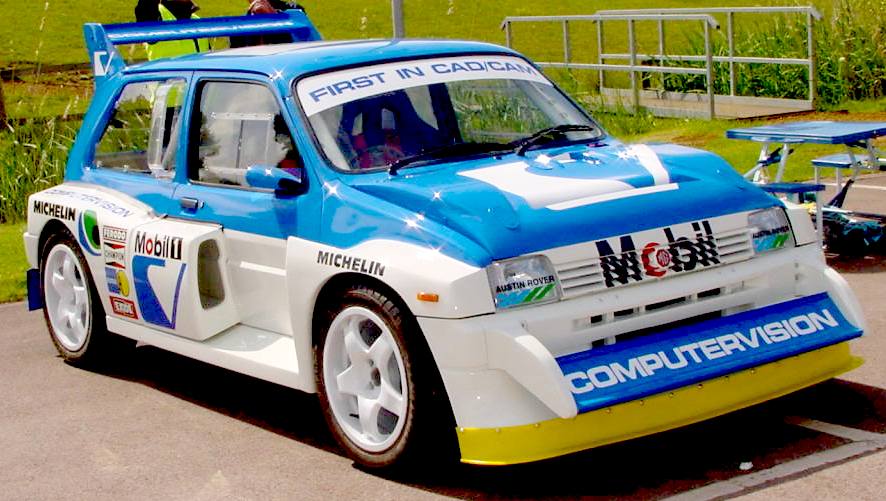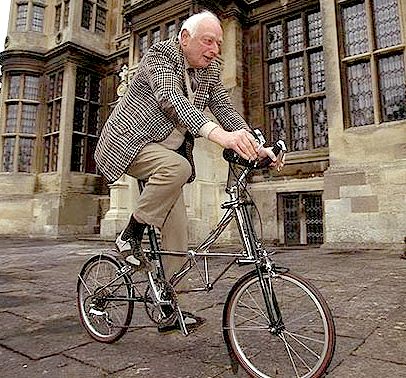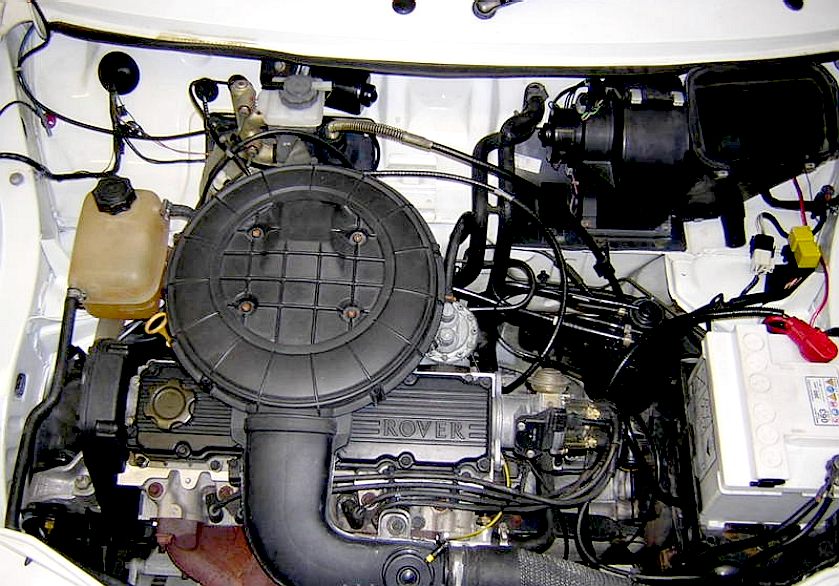|
||
|
A nice picture of a Rover Metro, showing the possibilities for customising. Custom cars lead to show cars and show cars are the production models of the future.
The Metro
was a (supermini) British economy car that was produced by the Austin Rover Group division of British Leyland and its successors. It was launched in 1980 as the Austin miniMetro. It was intended to complement the Mini, and was developed under the codename LC8.
The Metro 6R4 rally car takes styling to the extreme - and don't we just love extremes. This brute of a car had handling difficulties but became an instant hit despite not having a class to race in by the time it was coming on stream.
ROVER METRO
At the end of 1987, the Austin marque was shelved. The Austin badge was removed from the cars, which continued to be manufactured with no marque badge, just a model name badge. Rover management never allowed Rover badges on the Montego or the Maestro in their home market, although they were sometimes referred to as "Rovers" in the press and elsewhere. They wore badges that were the same shape as the Rover longship badge, but which did not say "Rover". The Metro did too until May 1990, when it was officially relaunched as the Rover Metro, heavily revised and fitted with a new range of engines.
A mockup could be seen at the Canley, Coventry design centre in the 1990s during open days. It appeared as a 'Scoop' photo on the front cover of CAR magazine in the mid-1980s. Project R6, as it became known would be a more modest update of the 1980 car – the basic bodyshell was retained, but was improved with the addition of new plastic front and rear bumpers, new front wings, new rear lights and
boot-lid, new front headlamps and bonnet. The interior was altered with a new rounded instrument binnacle and instruments, new
steering wheel, new seats (from the successful Rover 200 series), new door casings and other detail improvements. General build quality, fit and finish was improved enormously from the old Metro and went on to win What Car? "Car of The Year" in 1991.
Dr Alex Moulton
Alexander Eric ("Alex") Moulton CBE, FREng (9 April 1920 – 9 December 2012) was an English engineer and inventor, specialising in suspension design.
The combination of conical rubber springs and small wheels was one of the many innovative developments that allowed Issigonis to achieve the Mini's small overall size. This was later refined into the hydrolastic and hydragas suspension systems used on later British Leyland cars such as the Austin Maxi, Austin Allegro and Rover Metro, and most recently on the MGF.
Alex Moulton with his most famous designs, the Moulton cycle with full rubber suspension and the Mini's rubber cone suspension.
Moulton also designed the Moulton Bicycle, again using rubber suspension and small wheels. Alex Moulton Bicycles is based in Bradford-on-Avon, Wiltshire, England.
Dr Moulton founded his own company, Moulton Developments Ltd, in 1956 and worked closely with the British Motor Corporation (BMC) for many years, developing automobile suspension systems. Famously, these included the rubber suspensions systems for the Mini and the Hydrolastic systems for the Austin 1100/1300 and other BMC and British Leyland models. Later, he was responsible for the Hydrogas system, which was developed for the Austin Allegro car and is still in use on the Rover 100 series and the MGF.
Alongside the development of suspension systems for cars, Dr Moulton designed his revolutionary Moulton Bicycle. He explained that this was: “… born out of a resolve to challenge and improve upon the classic bicycle …” It is said that he holds the view that “… one is capable of pursuing two main avenues of research simultaneously, but no more”.
The
Moulton bicycle was the original full-suspension bicycle, highly efficient and designed with superior performance and comfort in mind.
These bikes are lighter, safer and more comfortable, yet still go faster than most as well! The Moulton
Bicycle is now a design classic, which has continued to be developed over many years, spawning a massive following of devotees and a wide range of models and variants.
Dr Alex Moulton and Sir Alex Issigonis were great friends. They worked together on rubber and hydrolastic suspension - to give the UK some huge motoring successes.
SIR ALEC ISSIGONIS
Sir Alexander Arnold Constantine Issigonis, CBE, FRS, RDI (18 November 1906 – 2 October 1988) was a Greek-British designer of cars, now remembered chiefly for the groundbreaking and influential development of the Mini, launched by the British Motor Corporation (BMC) in 1959.
Sir Alex was just under 6ft tall with large expressive hands. He hated all things big
- big cars, big organisations, big houses - and loved to shock his listeners.
Alec Issigonis at the drawing board. He was a practical engineer who had hand built a car in plywood and aluminium for some racing success, before he went on to work on rubber suspension and the Mini motor car.
In August 1959 the car was launched as the Morris Mini Minor and the Austin Seven, which soon became known as the Austin Mini. In later years, the car would become known simply as the Mini. Due to time pressures, the interconnected suspension system that Issigonis had planned for the car was replaced by an equally novel, but cruder, rubber cone system designed by Alex Moulton.
The Mini went on to become the best selling British car in history with a production run of 5.3 million cars. This ground-breaking design, with its front wheel drive, transverse engine, sump gearbox, 10-inch wheels, and phenomenal space efficiency, was still being manufactured in 2000 and has been the inspiration for almost all small front-wheel drive cars produced since the early 1960s.
Alec Issigonis with one of the original Minis. A nostalgic reminder of how times change.
ENGINE FOR SALE JANUARY 2016 - This is a picture of a Rover K series engine before removal from the donor car. It runs well. We are offering the engine and gearbox together for £200, buyer collects - or possibly we can arrange delivery in England from £75 (to be agreed with courier). You can have the engine or gearbox alone for £150 each. Please contact Ace for details: ace@speedace.info
BARGAIN COLLECTORS CAR FOR SALE - Click on the picture above to find out more about this economical to operate, 120 mph British classic sports car. First offered for sale in April 2017. Open to any sensible offer as project car that drives well, or ready to drive away with any work needed being done by the (private) seller for a little extra to cover costs.
ROVER | ROVER TOMCAT | METRO
SPARES INDEX - ENGINE - LIGHTING - SCREENS - BODYWORK - ELECTRICS - SEATS
LINKS:
http://www.autonews.com/files/euroauto/inductees/issigonis.htm http://en.wikipedia.org/wiki/Alec_Issigonis http://en.wikipedia.org/wiki/Rover_K-series_engine http://www.dcperformance.co.uk/performance/rover/metro.html http://www.profusioncustoms.com/rover-100-series-stainless-steel-exhaust/ http://www.carandclassic.co.uk/list/40/metro/ http://www.talonsportscars.com/metrocatalogue.php http://www.metropower.org.uk/portal/default.asp?id=115 http://www.alexmoultonbooks.co.uk/ http://en.wikipedia.org/wiki/Alex_Moulton http://en.wikipedia.org/wiki/Austin_Metro http://www.rover200.org.uk/forums/viewtopic.php?f=6&t=3049 http://www.rover200.org.uk/ http://www.rover-coupe.com/ http://en.wikipedia.org/wiki/Rover_200_Coup%C3%A9
It's about time we had an EV compatible with battery or hydrogen fuel cell technology. The Ecostar DC50 by Bluebird Marine Systems Ltd may well be the vehicle that changes all that for 2015. Alex Moulton and Alex Issigonis would be proud to see that their rubber, interlinked suspension system was being used for a superior ride and handling. The blue bird legend continues with the first (prototype) road car to carry the bird in flight insignia made famous by the exploits of Sir Malcolm and Donald Campbell.
|
||
|
The
content of this website is copyright © 2017 Electrick
Publications. All rights reserved. The bluebird logo |











